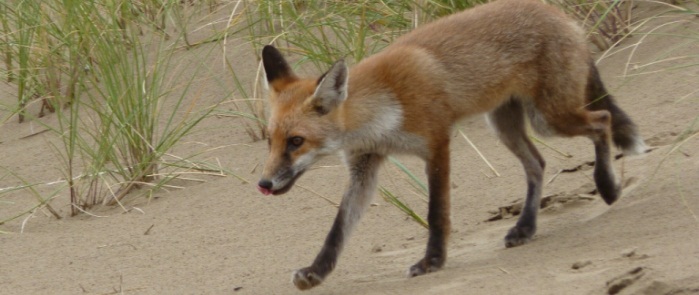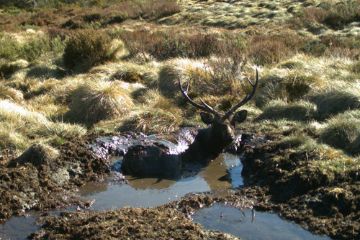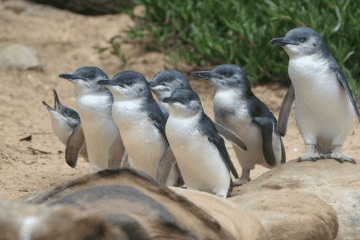Business 101: the first step to achieving a goal is to assess its feasibility and cost. That this is often neglected for conservation goals is symptomatic of a serious deficit of intent. Take the invasive species target of Australia’s Biodiversity Conservation Strategy – to reduce invasive species impacts on threatened biodiversity by 10%. There has been no feasibility assessment and no costed plan, rendering it an aspiration destined to fail.
In contrast, a group of researchers (Josie Carwardine and colleagues) last year assessed the feasibility and cost of saving wildlife in the Kimberley. The optimal investment – sufficient to maintain 45 at-risk species over the next 20 years – amounts to about $40 million a year after set up costs of $95 million. Much of it would go to keeping invasive species at bay.
With costs and feasibilities set out, there is now a ‘business case’ for investing in the future of Kimberley wildlife, and much less excuse for governments to avoid doing so.

The Kimberley is worth investing in
The Kimberley is a very special region – still wild, wondrously diverse and brimming with unique species:
- 65 endemic vertebrate animal species,
- 309 endemic plant species, and
- the highest numbers of endemic invertebrates in many groups, including land snails.
It is also special because mammals have survived there. The North Kimberley – one of five bioregions in the Kimberley – is one of only two bioregions Australia-wide to have retained all mammal species (the other is the Tiwi Islands). But this could soon change.
Northern Australia is facing an imminent calamitous wave of extinctions, and the Kimberley – although less affected so far than the other northern regions – is not immune. At particular risk are:
- small and medium sized ground-dwelling mammals such as golden-backed tree-rat (Mesembriomys macrurus), golden bandicoot (Isoodon auratus) and Monjon rock wallaby (Petrogale burbidgei),
- grain-eating birds such as partridge pigeon (Geophaps smithii blaauwi), gouldian finch (Erythrura gouldiae)and star finch (Neochmia ruficauda), and
- carnivorous reptiles such as spotted tree monitor (Varanus scalaris) and rough-scaled python (Morelia carinata).
Without effective management, “45 species of wildlife are likely to be functionally lost from the Kimberley in the next 20 years.”
The main threats are inappropriate fire regimes, feral cats, feral and domestic introduced herbivores (cattle, horses, donkeys), feral pigs, cane toads and weeds. Mining, tourism and agricultural expansion are likely to exacerbate the damage.

Investment needed
Based on expert advice, Carwardine and colleagues have set out what could be achieved for different levels of investment. To keep all species across the region (with a probably of at least 90%) will cost about $40 million a year with $95 million set-up costs, allocated as shown in the table. An investment of only $27 million a year would achieve persistence probabilities of all species to at least 50%, avoiding imminent species losses but risking declines.
| Fire and herbivore management | $25.3 million |
| Weed management | $2.8 million |
| Feral cat control | $2.8 million |
| Exclosures (for cats) | $3.5 million |
| Monitoring | $5 million |
| Annual total | $39.4 million |
The most cost-effective action is cat control but its feasibility is currently low because of the lack of broadscale control methods and the social value accorded to domestic cats. The researchers suggest that feasibility will improve with education about feral cat problems and research on biocontrol and the interactions of dingos and cats. However, the cat threat for at least eight mammal species is considered dire enough to warrant exclosure fences to create havens free of cats and possibly also cane toads.
Management of fire and introduced herbivores will deliver the greatest benefits and are feasible although also relatively expensive.
Weed control is ranked of lower benefit because as yet weed problems in the Kimberley are not “alarming” and it is difficult to quantify the benefits of keeping out potential new weeds. Weed management would rate more highly for plant conservation, which was not considered in this study. The authors comment that “an increase in funds for quarantine is likely to be a cost-effective strategy for long term biodiversity persistence.”
A monitoring program is essential to assess the effectiveness of management.
Cats in the Kimberley
Cats established in the Kimberley at least by the 1920s. A study at Mornington Wildlife Sanctuary suggests there is a cat every 3 km², each eating 5–12 native vertebrates daily. If this is consistent throughout the region, it means 100,000 cats, killing at least half a million native animals daily.
There are currently no effective control methods for feral cats – they are trap shy and rarely eat poisoned baits.
The most feasible option could be to cease baiting of dingoes, which appear to suppress cat activity and kill kittens. Although dingoes are also predators, they frequently take larger prey, reducing pressure on small fauna. Relationships between cats and dingoes in the region are under investigation. One study at Wongalara Sanctuary in the Northern Territory, where half the property was baited for dingos and half left unbaited, found that cat activity decreased and small lizard populations increased in the unbaited areas. Should baiting cease, the impact on pastoralists should be manageable as only low losses are currently reported.
Biological control of cats is considered technically feasible but would require a substantial change in community attitudes.
Fenced cat-free areas on islands or conservation properties may be needed to save species in the short-term.

Photo: Dluogs (Creative Commons licence)
Reference
Carwardine J, O’Connor T, Legge S, Mackey B, Possingham H, Martin T. 2011. Priority threat management to protect Kimberley wildlife. CSIRO Ecosystem Sciences, Brisbane.




